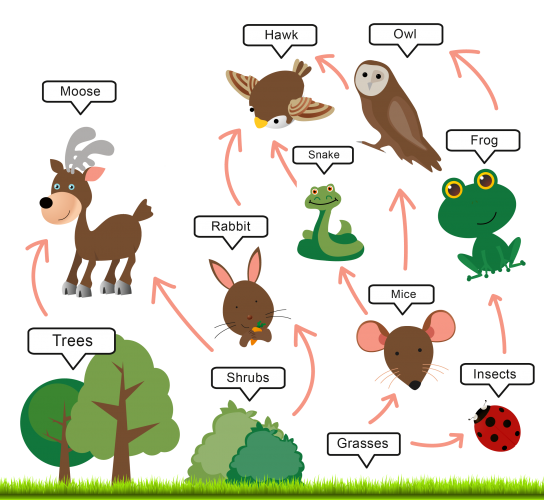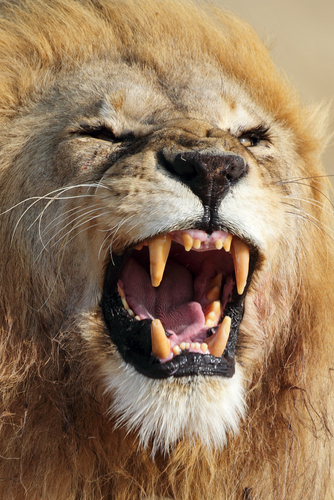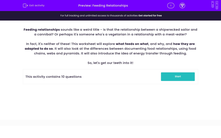Feeding relationships sounds like a weird title - is that the relationship between a shipwrecked sailor and a cannibal? Or perhaps it's someone who's a vegetarian in a relationship with a meat-eater?

In fact, it's neither of these!
Living things (organisms) that live in a certain area or habitat, all rely on one another. We say they're interdependent.
Often, they depend on one another for food.
A clever way scientists show this is through something called a food chain. Here's a pretty standard example:

In this food chain, we can see that the grass is being eaten by the rabbit which in turn gets eaten by the fox.
The grass is a plant, so we call it a producer, which means it makes (produces) its own food (through that amazing process called photosynthesis).
The rabbit is a primary consumer (they're herbivores) - it's the first animal to eat in the food chain which is why we use the word primary.
This is eaten by the fox which is the secondary consumer (they're carnivores).
A bit like primary school is the first school we go to, followed by a secondary school - yes?
.jpg)
The fox is also known as a predator. A predator is an organism that will hunt for its food.
The fox is adapted (or suited) to hunt by being fast and having sharp teeth to capture its prey - the rabbit in this case.
.jpg)
The rabbit also has adaptations to avoid the fox, for example having a good sense of hearing. No wonder it has such huge ears!
The arrows in a food chain are really important because they show us what gets eaten by what, but also shows the direction of the energy transferred.
So, in the food chain above, the energy in the grass is transferred to the rabbit, and then gets transferred to the fox when it eats the rabbit.
We can link lots of food chains together to form something called a food web.
Food webs show all the different feeding relationships in a habitat. Most organisms will feed on different sources of food.
Here's an example:

In this example, we can see that the mouse feeds on the grass but gets eaten by the snake, which gets eaten by the hawk.
We can write this particular food chain out:
Grass → Mouse → Snake → Hawk
Another example of a food chain from within that food web could be:
Grass → Insects → Frog → Owl
We can also show feeding relationships between organisms by using a pyramid of numbers.
A pyramid of numbers shows the number of organisms at each stage of a food chain.
.jpg)
Look at this pyramid of numbers from a field (using the food chain we saw above):

This pyramid of numbers shows that the rabbit eats one million blades of grass and one fox eats ten rabbits!
This activity will explore what feeds on what, why, and how they are adapted to do so.
It will also look at the differences between documenting food relationships, using food chains, webs and pyramids.
It will also introduce the idea of energy transfer through feeding.
So, let's get our teeth into it!








